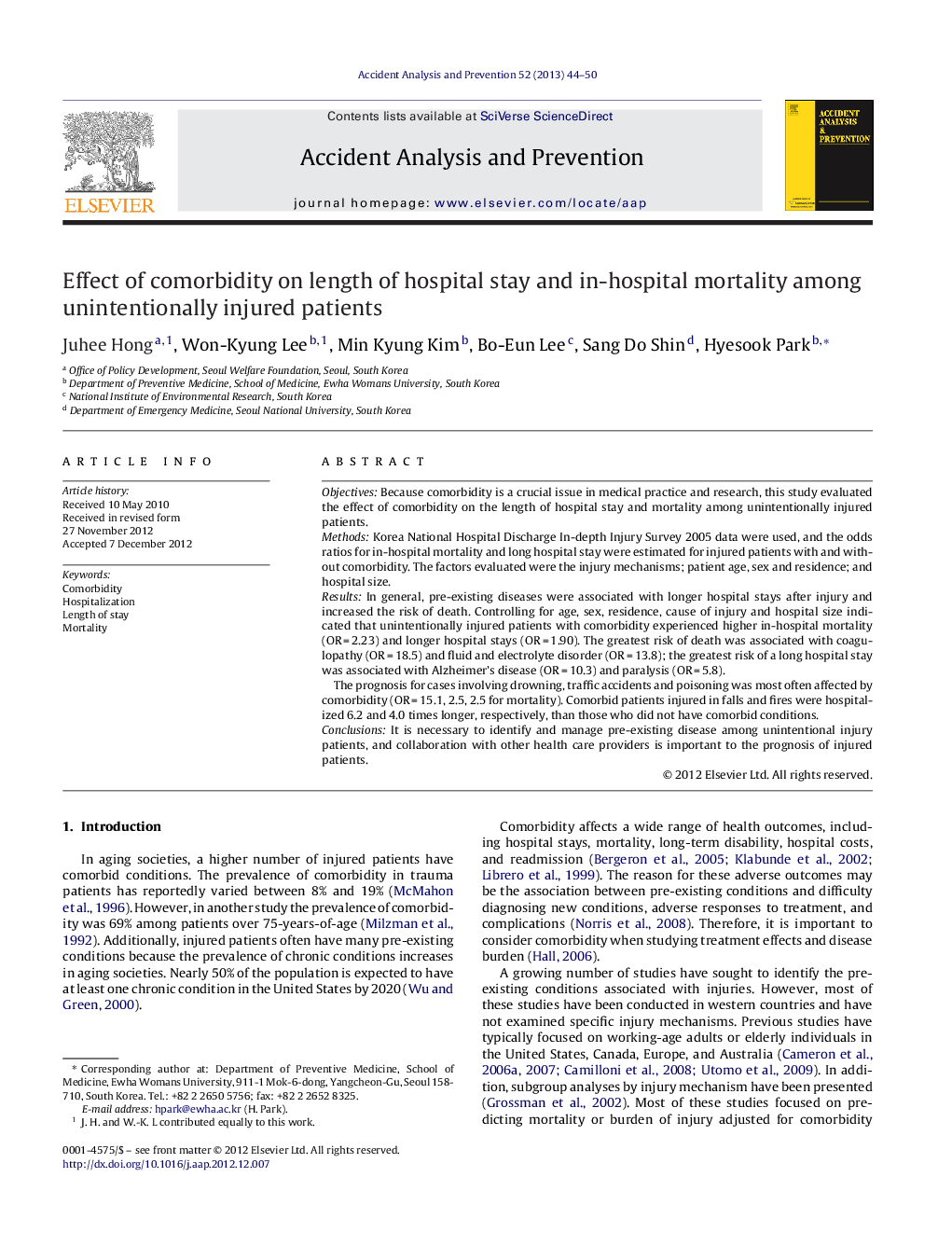| Article ID | Journal | Published Year | Pages | File Type |
|---|---|---|---|---|
| 572542 | Accident Analysis & Prevention | 2013 | 7 Pages |
sObjectivesBecause comorbidity is a crucial issue in medical practice and research, this study evaluated the effect of comorbidity on the length of hospital stay and mortality among unintentionally injured patients.MethodsKorea National Hospital Discharge In-depth Injury Survey 2005 data were used, and the odds ratios for in-hospital mortality and long hospital stay were estimated for injured patients with and without comorbidity. The factors evaluated were the injury mechanisms; patient age, sex and residence; and hospital size.ResultsIn general, pre-existing diseases were associated with longer hospital stays after injury and increased the risk of death. Controlling for age, sex, residence, cause of injury and hospital size indicated that unintentionally injured patients with comorbidity experienced higher in-hospital mortality (OR = 2.23) and longer hospital stays (OR = 1.90). The greatest risk of death was associated with coagulopathy (OR = 18.5) and fluid and electrolyte disorder (OR = 13.8); the greatest risk of a long hospital stay was associated with Alzheimer's disease (OR = 10.3) and paralysis (OR = 5.8).The prognosis for cases involving drowning, traffic accidents and poisoning was most often affected by comorbidity (OR = 15.1, 2.5, 2.5 for mortality). Comorbid patients injured in falls and fires were hospitalized 6.2 and 4.0 times longer, respectively, than those who did not have comorbid conditions.ConclusionsIt is necessary to identify and manage pre-existing disease among unintentional injury patients, and collaboration with other health care providers is important to the prognosis of injured patients.
► Comorbidities were associated with longer hospital stays after injury and increased in-hospital mortality. ► The greatest risk of death was associated with coagulopathy and fluid and electrolyte disorder. ► The greatest risk of a long hospital stay was associated with Alzheimer's disease and paralysis. ► The prognosis for injuries involving drowning, traffic accidents and poisoning was most often affected by comorbidity.
